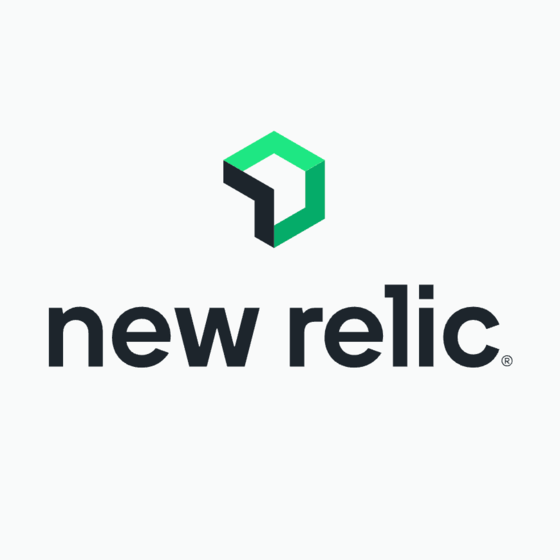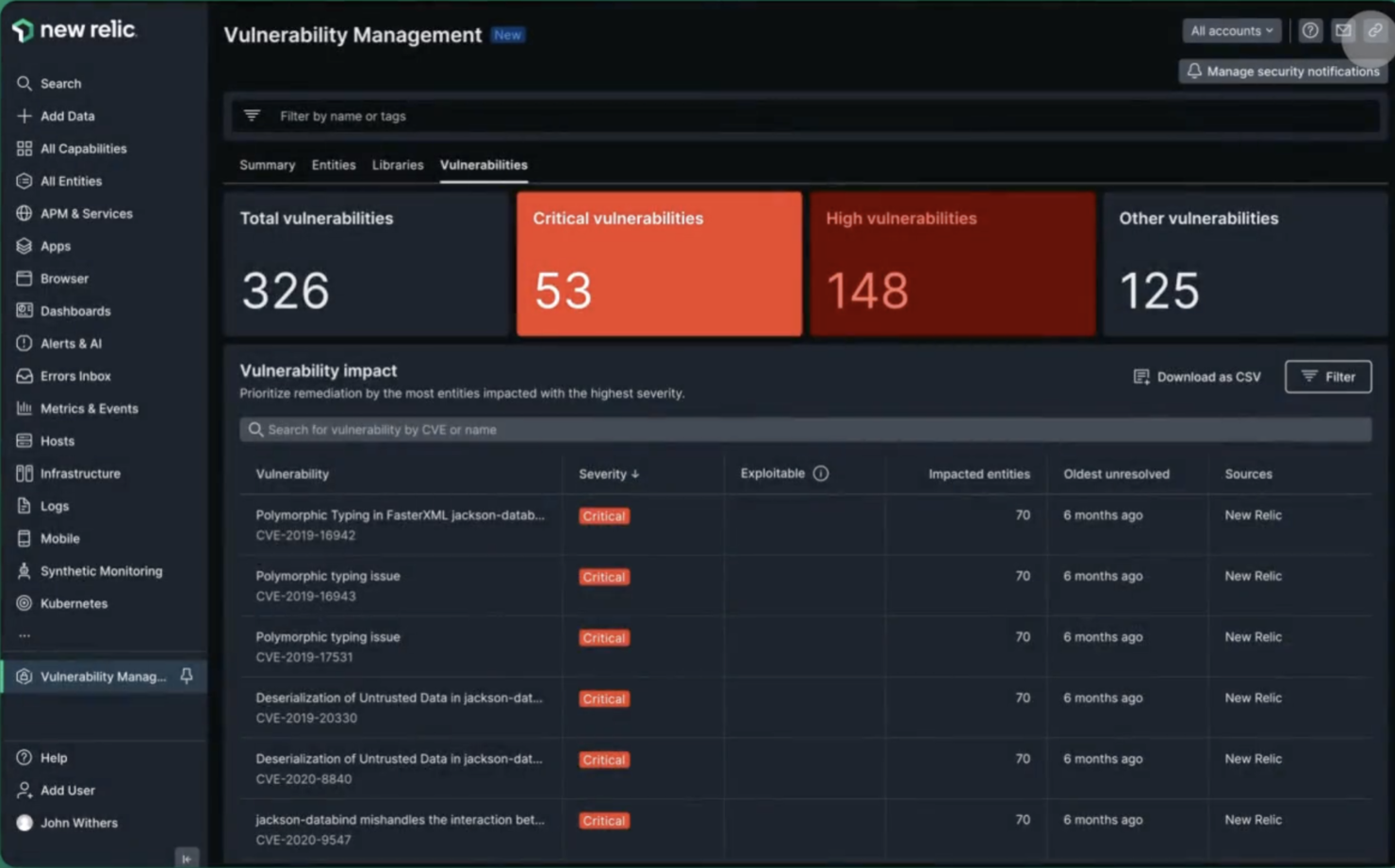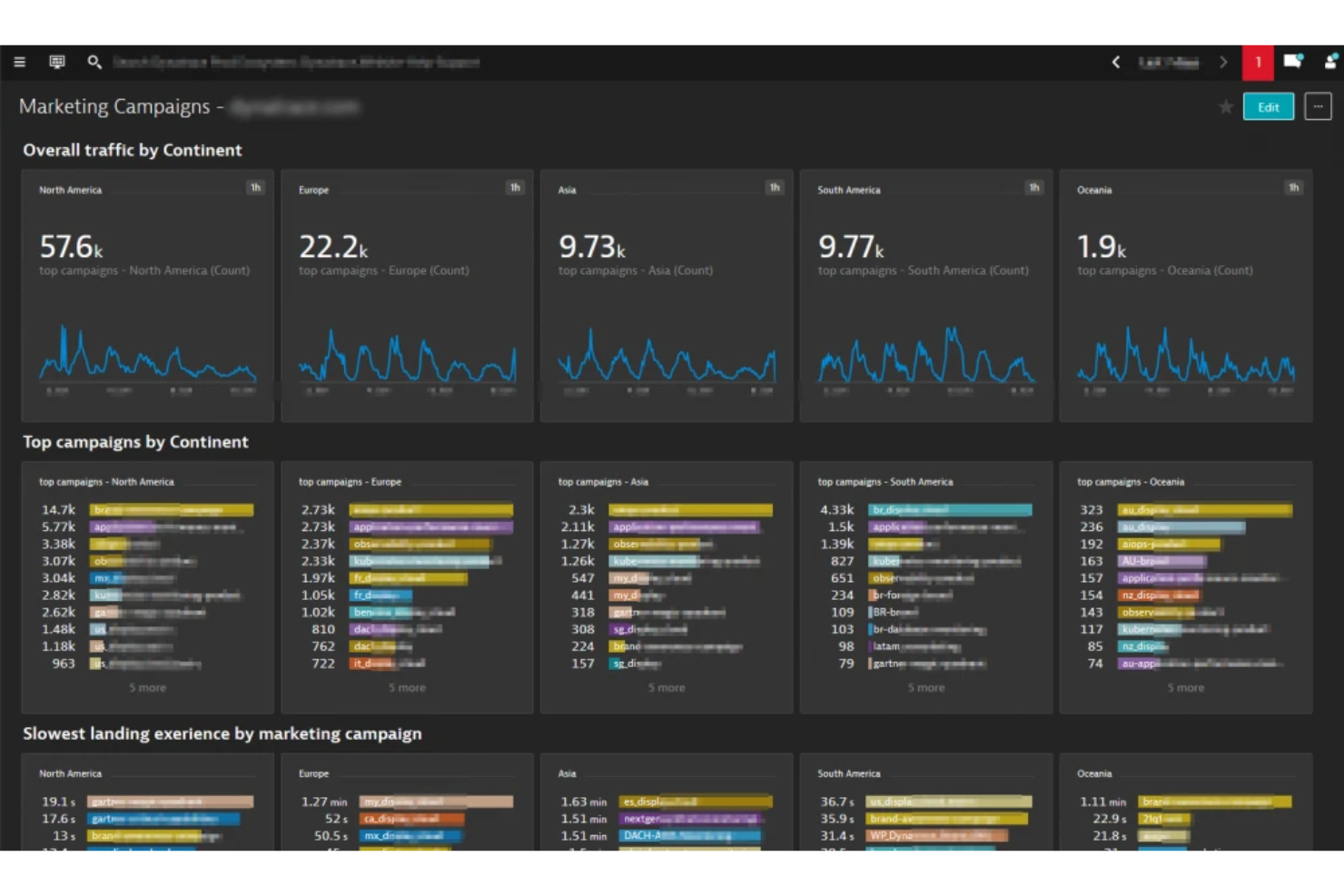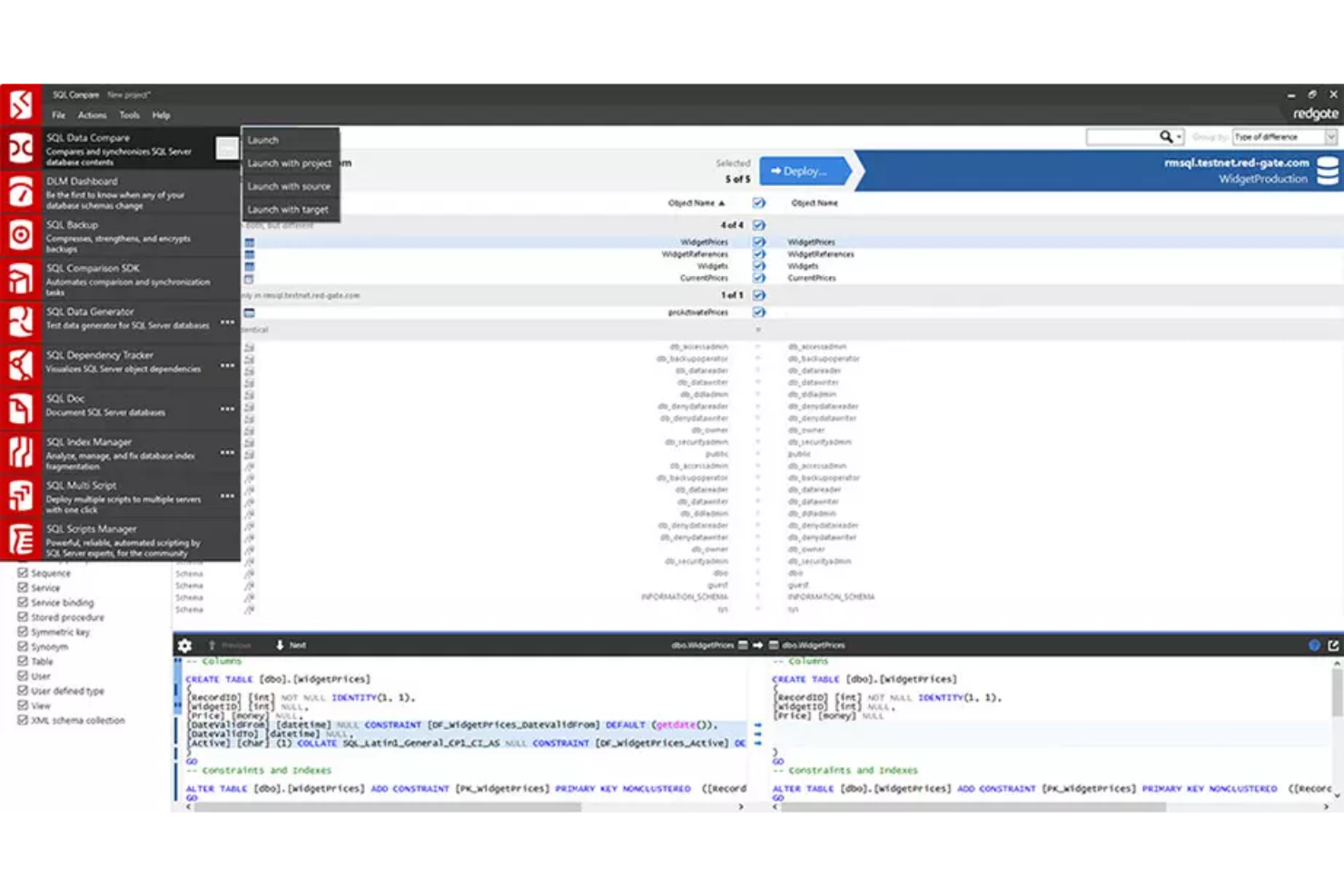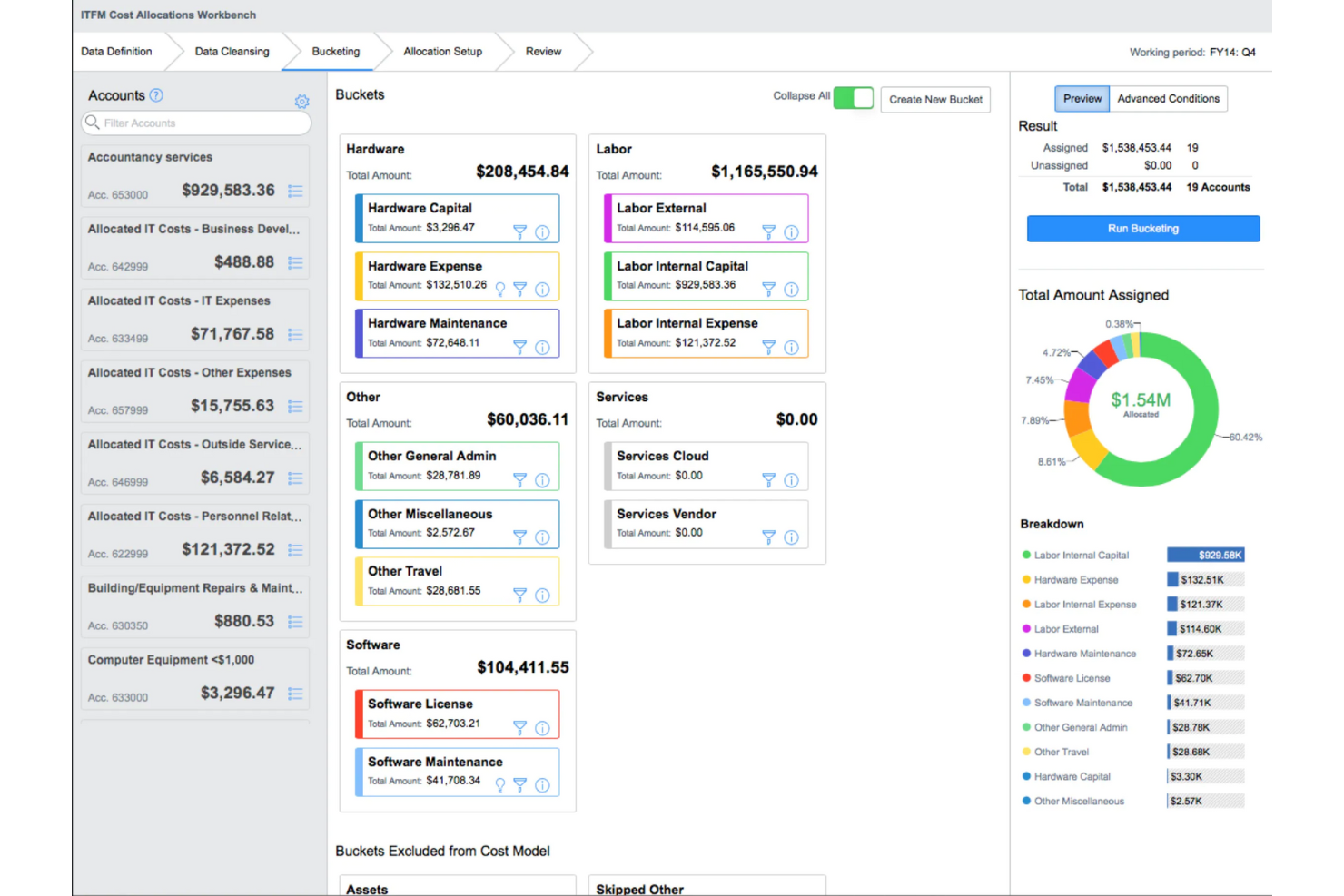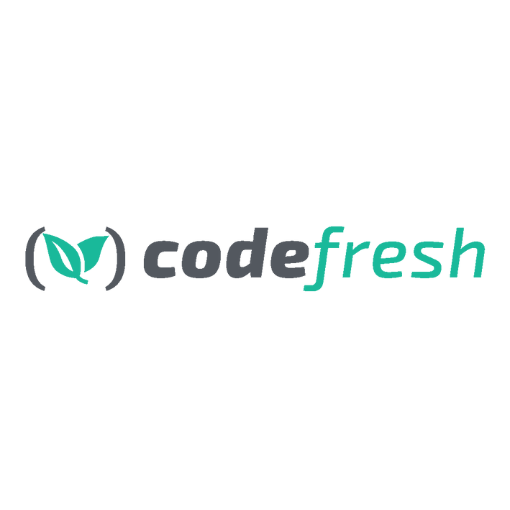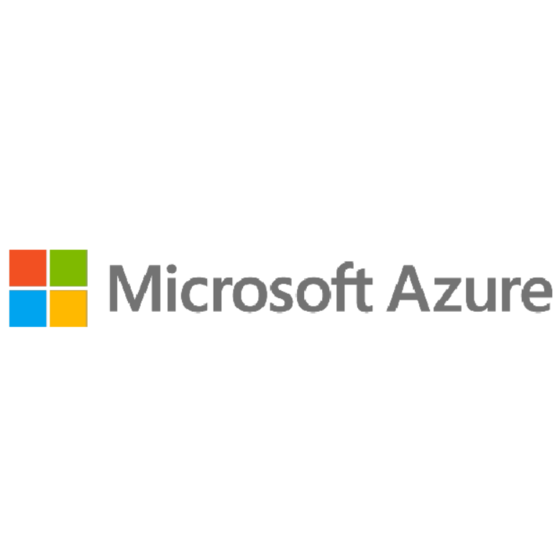10 Best DevOps Deployment Tools Shortlist
Here's my pick of the 10 best software from the 20 tools reviewed.
With so many different DevOps deployment tools available, figuring out which is right for you is tough. You know you want to streamline and automate the process of deploying software to production environments but need to figure out which tool is best. I've got you! In this post I'll help make your choice easy, sharing my personal experiences using dozens of different deployment software with various teams, with my picks of the best DevOps deployment tools.
Why Trust Our DevOps Deployment Tool Reviews?
We’ve been testing and reviewing DevOps deployment tools since 2021. As QA software testers ourselves, we know how critical and difficult it is to make the right decision when selecting software.
We invest in deep research to help our audience make better software purchasing decisions. We’ve tested more than 2,000 tools for different use cases and written over 1,000 comprehensive software reviews. Learn how we stay transparent & our review methodology.
The Best DevOps Deployment Tools Summary
| Tools | Price | |
|---|---|---|
| New Relic | From $49/user/month | Website |
| Dynatrace | From $0.08/8 GB/Hour | Website |
| Redgate | From $1200+ per license | Website |
| DevOps by ServiceNow | Pricing upon request | Website |
| Octopus Deploy | From $50 per month | Website |
| Capistrano | Free To Use | Website |
| Travis CI | From $34/user/month | Website |
| Copado | $1,000/month | Website |
| Codefresh | $49/month | Website |
| Microsoft Azure DevOps Services | No price details | Website |

Compare Software Specs Side by Side
Use our comparison chart to review and evaluate software specs side-by-side.
Compare SoftwareHow To Choose DevOps Deployment Tools
With so many different DevOps deployment tools available, it can be challenging to make decisions on what tools are going to be the best fit for your needs.
As you're shortlisting, trialing, and selecting DevOps deployment tools, consider:
- What problem are you trying to solve - Start by identifying the DevOps deployment tools feature gap you're trying to fill to clarify the features and functionality the tool needs to provide.
- Who will need to use it - To evaluate cost and requirements, consider who'll be using the software and how many licenses you'll need. You'll need to evaluate if it'll just be the QA software testers or the whole organization that will require access. When that's clear, it's worth considering if you're prioritizing ease of use for all or speed for your DevOps deployment tool power users.
- What other tools it needs to work with - Clarify what tools you're replacing, what tools are staying, and the tools you'll need to integrate with, such as other testing tools, automation tools, or bug tracking software. You'll need to decide if the tools will need to integrate together or if you can replace multiple tools with one consolidated DevOps deployment tool.
- What outcomes are important - Consider the result that the software needs to deliver to be considered a success. Consider what capability you want to gain or what you want to improve and how you will be measuring success. For example, an outcome could be the ability to get greater visibility into performance. You could compare DevOps deployment tools features until you’re blue in the face but if you aren’t thinking about the outcomes you want to drive, you could be wasting a lot of valuable time.
How it would work within your organization - Consider the software selection alongside your workflows and delivery methodology. Evaluate what's working well, and the areas that are causing issues that need to be addressed. Remember every business is different — don’t assume that because a tool is popular that it'll work in your organization.
Best DevOps Deployment Tool Reviews
Here’s a brief description of each devops deployment tools to showcase each tool’s best use case, some noteworthy features, and screenshots to give a snapshot of the user interface.
New Relic is a DevOps deployment tool that provides real-time monitoring and analytics for your software applications. It's designed to help you understand how your applications are performing, identify bottlenecks, and troubleshoot issues quickly.
Why I picked New Relic: New Relic excels in DevOps deployment due to its unique combination of comprehensive monitoring capabilities, distributed tracing, AI-powered anomaly detection, seamless integrations with DevOps tools, scalability, and collaboration features. It provides real-time visibility into application performance and infrastructure health, allowing teams to quickly identify and resolve issues.
New Relic utilizes AI-powered anomaly detection to automatically identify and alert users about abnormal patterns or deviations in application performance data. This functionality leverages machine learning algorithms that analyze large volumes of real-time and historical data to establish baseline performance metrics. By continuously monitoring metrics such as response times, error rates, and throughput, New Relic's AI algorithms can detect deviations from normal behavior. When an anomaly is detected, it triggers alerts or notifications, enabling DevOps teams to investigate.
New Relic Standout Features & Integrations
Features include backend monitoring, Kubernetes monitoring, mobile monitoring, model performance monitoring, infrastructure monitoring, log management, error tracking, network monitoring, vulnerability management, and browser monitoring.
Integrations include over 500 apps, like AWS, Google Cloud, and Microsoft Azure, CI/CD tools like Jenkins, CircleCI, and Travis CI, communication tools like Slack and PagerDuty, and other monitoring and analytics tools like Grafana, Datadog, and Splunk. It also has an API you can use to build custom integrations.
New Relic Pricing
New Relic costs from $49/user/month and offers a free plan for 1 user and 100 GB/month of data ingest.
Pros and cons
Pros:
- Wide range of monitoring capabilities
- Integrates seamlessly with popular dev tools
- AI-powered anomaly detection and intelligent alerting
Cons:
- Added complexity from reliance on agents installed on application servers
Best AI-powered observability tool for cloud infrastructure and app monitoring
With the growing trend toward cloud computing, Dynatrace has become an important part of the DevOps toolkit, providing valuable insight into cloud infrastructure and container activity.
Why I Picked Dynatrace: Dynatrace goes beyond mere intelligent observability and infrastructure monitoring. Dynatrace also offers insight into the black box of AI explainability, bolstering the ethics governance into the effects and consequences of algorithms.
With its AIOps, Dynatrace has signaled that it’s gone big on artificial intelligence and automation by adopting machine learning models. In addition, it seamlessly pairs cloud automation with business analytics alongside log management and automatic discovery capabilities.
Dynatrace’s Standout Features & Integrations
Features include infrastructure monitoring, application lifecycle management, AI-powered automation, application security, and distributed tracing.
Integrations include all the major cloud computing and Kubernetes platforms. So, DevOps can use Dynatrace to monitor AWS, Azure, Google Cloud Compute, ServiceNow, OpenShift, and VMware Tanzu monitoring.
Dynatrace has also forged out-of-the-box integrations with test automation frameworks like JMeter, LoadRunner, and Neotys.
Dynatrace Pricing
Dynatrace costs vary by package and start at $15-74/host/month.
Pros and cons
Pros:
- The most popular observability platform.
- Provides good visibility through good executive-level dashboards.
- Analytics with seamless integration.
Cons:
- The user interface needs to be more intuitive.
- Steep learning curve because of so much functionality.
- Some users complain of receiving false alarms.
Redgate
Best for protecting critical data during deployment by monitoring database problems
Redgate is a software tool that helps DevOps automate database deployments. It ensures frequent deployments are handled with effective database compliance.
Why I Picked Redgate: Redgate provides organizations with end-to-end database development tools that drastically reduce release cycles from months to days. It equips management and IT leadership with the insight to standardize DevOps best practices.
Redgate enables teams to accelerate development delivery times and business requirements of projects while increasing code quality.
Redgate also shines as a database performance monitoring and availability tool. Not only does it provide the ability to scale operations across servers, but it ensures problems are pinpointed before they impact end-users.
Redgate Standout Features & Integrations
Features include standardize team-based development, database monitoring, version control and change management, and SQL provisioning.
Integrations include AWS’s EC2 and RDS. It also has integrations with ServiceNow, Jira Software, Bamboo, Jenkins, Slack, Microsoft Teams, and many others. Redgate’s Fly offers integrations with Maven, Docker, Cake, Chef, JUnit, and IntelliJ IDEA.
Redgate Pricing
Redgate has an array of products in its stable that range from $1200+ per license.
Pros and cons
Pros:
- Fast and lightweight
- Intuitive UI and flexible SDK
- A lot of customization options
Cons:
- Products lack free trial and free version
ServiceNow DevOps is designed to facilitate change management operations through automating the planning, developing, testing, deployment tasks. Moreover, ServiceNow DevOps provides teams with native SNOW capabilities.
Why I Picked ServiceNow DevOps: ServiceNow DevOps is equipped with useful features, such as the incident module for tracking events. This means it offers organizations in-built, exceptional knowledge management and helpdesk features. It collects data across the spectrum of DevOps activities and subsequently makes it easy to deploy applications quickly while reducing the risk of compromising quality.
ServiceNow DevOps facilitates service management activities that deliver IT services. DevOps data model allows you to move, map, and transform data while migrating from source to target destination.
ServiceNow DevOps provides visibility across a DevOps toolchain from a single dashboard while reducing your operations' costs, complexity, and risk through automation.
ServiceNow DevOps Standout Features & Integrations
Features include change and incident management, using automatic ticketing, event-driven automation, and ideal for the IT infrastructure library (ITIL).
Integrations are made possible via their IntegrationHub, an API-enabled system to integrate products quickly . Jira Software, Azure Boards, Azure Repos, Bitbucket Server/Enterprise, Azure Pipelines, GitHub, Jenkins, and GitHub Enterprise, are some of the platforms and tools that integrate with ServiceNow DevOps.
Pricing
Contact ServiceNow DevOps’ sales department for a price quote.
Pros and cons
Pros:
- Proves advantageous for several use cases such as help desk and knowledge management
- Offers a lot of customizable change management solutions
Cons:
- It is expensive, so many organizations can’t afford it
- Some users complain it takes more than the normal time to complete transactions
Octopus Deploy is a deployment automation tool that makes multi-tenant deployment easier, especially for enterprises and teams with large software artifacts. It focuses on making repeatable deployments more reliable by reducing their complexity.
Why I Picked Octopus Deploy: Octopus Deploy enables release managers and DevOps teams to have greater control and management over their releases. One of the main ways it achieves this is by allowing DevOps teams to use one deployment process across multiple environments.
Octopus Deploy also simplifies deployment operations through automation, allowing teams to execute runbooks from a single place.
As a result of these features, Octopus Deploy is renowned for standardizing the software delivery process and making repeatable deployments simple and easy to execute. Although deployment is the last phase in the CI/CD, Octopus helps ship code faster by accelerating this process.
Octopus Deploy Standout Features & Integrations
Features include multi-tenancy, automating complex software deployments, GitHub actions deployment, scalability, and API-first philosophy.
Integrations include favorite CI servers and deployment tools such as the following: Jenkins, Azure DevOps Server, Kubernetes, Docker, Apache Tomcat, NGINX, TeamCity, CirceCI, Bamboo, GitHub Actions, and others.
Octopus Deploy Pricing
Octopus Deploy has two pricing and deployment modes: Cloud (deployment-as-a-service) and Server (Octopus on your infrastructure). Pricing starts at $10/target/month. Octopus Deploy provides users with a 30-day trial with its Community and Professional versions.
Pros and cons
Pros:
- Provides clarity with deployment management
- Affordable pricing
- Excellent dashboard visibility
Cons:
- Dashboard customization could be better around hiding/filtering data
Capistrano is a free, open-source utility that makes software deployment easy with its ability to create multiple CI/CD pipeline environments, including staging and production. Moreover, it allows you to create tasks that are applied to roles on host machines.
Why I Picked Capistrano: Capistrano performs IT automation, like backing up multiple releases seamlessly. But one of its most vital use cases is making it feasible to automate the deployment of web-based applications to distributed environments.
Although it is written in Ruby, you can use it to deploy other programming languages. Frameworks and languages easily used for scripting deployments with Capistrano include Java, Rails, and PHP. In practice, Capistrano functions as a remote server automation tool. It allows you to execute commands in parallel, via SSH, on multiple remote systems.
Without needing to use copy-and-paste gimmicks, Capistrano allows you to use parameterized deployments for multiple staging with single deployment definitions.
Capistrano Standout Features & Integrations
Features include task runner deployment/delivery, automate and script arbitrary workflows, and multiple staging.
Integrations can be built using their open source code.
Capistrano Pricing
Capistrano is free to use.
Pros and cons
Pros:
- The ability to automate the deployment of web applications to distributed environments
- Enabling you to use gateways machines to support tunneling to perform operations behind VPNs and firewalls
- Easy automation of common DevOps tasks
Cons:
- Expects POSIX shell like Bash or Sh., can try tchs, csh, etc. but may not work
- Difficult to use if your deployment requires sudo or interactive prompts
- Difficult to use if authenticated by one user and running commands as another
Travis CI is a continuous integration tool that enables you to build code faster and deploy applications with confidence. As the first CI service tool, it helps teams to avoid “integration hell” by prioritizing integration instead of putting it off till the end.
With assistance from its installed database, Tracis CI provides pre-installed database services that makes it easy for them to quickly set up and start testing their code in minutes.
Why I Picked Travis CI: Travis CI allows teams to sync and check automated builds for errors. Travis CI brought a new approach to cloud computing and building code. It also provides support for various programming languages, platforms, and built configurations such as PHP, Java, and Node.js. It also provides users with the advantage of both a powerful API and a command line tool.
Tracis CI combines automated code reviews with sanity checks. These ensure that builds pass all the organizations internal checks before they are integrated to ensure it meets quality standards.
Travis CI is also integrated with other DevOps ecosystems. You can sign up using your GitLab or Bitbucket account, essentially allowing you to connect to these repositories.
Travis CI Standout Features & Integrations
Features include automated code reviews, debugging and parallel testing, test and change management, quick setup, version controlled configuration, and auto scalability.
Integrations include public and private repositories on GitHub. Other integrations include MySQL, Amazon S3, Heroku, Red Hat OpenShift, Assembla, Docker, and OpsGenie, so on.
Travis CI Pricing
Travis CI starts at $64/month and goes up from there. All plans offer a free trial.
Pros and cons
Pros:
- Very quick and easy setup
- Triggers automatic builds upon pull request initiation.
- Inexpensive with good documentation
Cons:
- Offers less customizable options
Copado is a low-code platform focused on helping sales teams deliver CI/CD pipeline deployments. Developed by Salesforce, Copado is designed to make deployments on its secure platform easier to execute for DevOps.
Why I Picked Copado: Copado is built for system administrators, architects, and developers to implement and quickly release software changes at half the risk. Copado provides an end-to-end development lifecycle that makes your software more resilient by integrating AI-driven test automation into deployed code.
Because Copado is natively built on Salesforce, developers quickly scan code and move from working on a sandbox to deploying Salesforce metadata and seamlessly syncing with their Salesforce organization.
Copado is focused on bringing value stream management to its Salesforce customer so that a team can visualize the delivery process through value stream maps, its unified DevOps platform, flexible architecture, and improved agile adoption.
Copado Standout Features & Integrations
Features include monitoring, managing CI/CD pipelines, low-code automation, value stream management, easy integration between your product into other Salesforce application lifecycle management (ALM) tools, and track changes capabilities in your Salesforce environment.
Integrations include the ability to sync items like user stories with Jira and Azure boards in agile two-way integrations to simplify feature planning and facilitate better Agile sprints. These include built-in integrations such as Git and Vlocity. Its add-on integrations include Jenkins, Bitbucket, OwnBackup, and Welkin Suite.
Copado Pricing
Copado starts at $1000/month. They offer a free Essential version.
Pros and cons
Pros:
- Ideal for executing deployments with smaller teams
- Presents DevOps practices to non-technical users
- Accelerates since data is contained in a single location
Cons:
- Requires a significant learning curve to execute
Codefresh is a modern, enterprise-level CI/CD and GitOps tool that allows teams to spin up deployment artifacts on demand. Codefresh enables businesses to fetch and compile data from their Git repositories easily.
Why I Picked Codefresh: Codefresh is GitOps-friendly, with features allowing teams to automate workflows to reduce manual efforts. In addition to implementing advanced deployments in a scalable manner, Codefresh also provides insight into the health of your application.
Codefresh facilitates the optimal enterprise software delivery supply chains through Argo and your Kubernetes cluster. It also provides greater control over DevOps activities and cloud pipelines by making the most complex deployment challenges easy to pull off.
Codefresh dashboards provide robust visibility and continuously monitor your environment. It offers a 360-degree view of your Docker images, logs, test information, and commit results.
Codefresh’s Standout Features & Integrations
Integrations include robust customer and technical support, CI/CD pipeline efficiency, various deployment strategies, full visibility, and enterprise-grade performance.
Integrations include other DevOps tools like Jenkins, which allows teams to create more complex pipelines. Codefresh has other useful integrations with Docker, GitHub, Bitbucket, Docker Compose, Docker Swarm, Amazon EC2, and so on.
Codefresh Pricing
Codefresh has a free community version. Paid plans cost from $49/user/month.
Pros and cons
Pros:
- User-friendly API
- Fast, efficient, and easy way to work with Docker
- Excellent customer support
- YAML-supported configuration-as-code for easy customization of pipeline steps
Cons:
- Wait times for customer support help
- No Argo workflows in Hosted Codefresh
- Slow in Safari browser
Azure DevOps provides DevOps teams, especially those using Microsoft tech stack, with an integrated suite of modern dev services. It provides a comprehensive ecosystem of services that is easy to implement. Yet, you aren’t beholden to it because Azure DevOps allows you to select which elements you wish to integrate into existing workflows.
Why I Picked Azure DevOps: Azure DevOps is scrum ready and facilitates collaboration, allowing teams to create and deploy applications while working on projects seamlessly.
Azure DevOps provides both cloud-based and on-premise usage. Its ecosystem provides users with various tools like Azure Boards, Azure Pipeline, and Azure Test Plans. These keep you connected from idea to release.
In addition to CD/CI capabilities, Azure DevOps provides traceability through its comprehensive tracking ability, keeping everyone abreast of activities in their project.
Azure DevOps Standout Features & Integrations
Features include code management capabilities, tracking and project management across teams, control and manage source code repository, integrated + exploratory app testing.
Integrations include Jenkins, Ansible, Chef, Puppet, and Terraform. It can also be used with developer tools such as Maven, Eclipse, and IntelliJ.
Azure DevOps Pricing
Azure DevOps offers free trials for its products. Contact Azure DevOps sales for pricing quotes.
Pros and cons
Pros:
- Easy to setup and deploy
- Enhanced team collaboration tools
- Great for organizations who follow the Agile methodology
- Provides tremendous flexibility when managing projects
Cons:
- Significant learning curve
- Its interface can be cluttered
Other DevOps Deployment Tools
Here are a few more options:
- Incredibuild
Best for C++ code compilation and distributed processing
- Atlassian OpenDevOps
Best integrated DevOps mission-control center for agile and toolchain tracking
- Jenkins
Best open-source DevOps automation server
- Datadog
Best for server monitoring and observability for cloud-scale applications
- Ozone
Best modern delivery orchestrator for Docker containers
- Blue Canvas
Best DevOps solution for Salesforce software development
- IBM UrbanCode Deploy
Best automated, enterprise-grade application release solution
- Juju
Best big data application modeling solution
- AWS CodeDeploy
Best for automating and scaling code deployments on various Amazon compute instances
- DeployBot
Cloud-based code deployment and management tool
Related DevOps Deployment Tool Reviews
- Test Management Tools
- CI/CD Tools
- Incident Management Software
- Code Review Tools
- Issue Tracking Software
- Automation Testing Tools
Selection Criteria For DevOps Deployment Tools
Selecting the ideal DevOps deployment tool is a pivotal decision for teams aiming to optimize their software delivery pipeline. My approach to evaluating these tools is rooted in extensive hands-on experience and thorough research, focusing on how well each tool addresses the unique challenges and requirements of modern software development. A well-chosen DevOps deployment tool not only streamlines the deployment process but also supports continuous integration and continuous delivery (CI/CD) practices, enhancing overall efficiency and productivity.
Core DevOps Deployment Tools Functionality: - 25% of total weighting score
To be considered for inclusion on my list of the best DevOps deployment tools, the solution had to support the ability to fulfill common use cases:
- Automating the deployment process across various environments
- Ensuring seamless integration with CI pipelines for continuous delivery
- Managing configuration and secrets securely
- Providing real-time monitoring and alerts for deployments
- Supporting scalable deployment strategies for microservices and cloud-native applications
Additional Standout Features: - 25% of total weighting score
Innovation distinguishes the leading tools in the market. I seek out:
- Advanced analytics and insights for optimizing the deployment process
- AI-driven predictive models for identifying potential deployment issues
- Self-healing capabilities that automatically address deployment failures
- Environment-as-a-Service (EaaS) for dynamic and on-demand environment provisioning
- Comprehensive security scanning and compliance checks integrated into the deployment pipeline
Exploring these features helps to identify tools that offer more than just the basics, providing advanced capabilities that can significantly improve deployment efficiency and reliability.
Usability: - 10% of total weighting score
The ease of use is critical for adoption and effectiveness. Important considerations include:
- Intuitive user interface and clear documentation
- Simple setup and configuration processes
- Customizable dashboards and reporting for easy monitoring
- A strong ecosystem of plugins or integrations to extend functionality
Onboarding: - 10% of total weighting score
Effective onboarding ensures teams can quickly leverage the tool's capabilities. I look for:
- Comprehensive training materials, such as online tutorials and documentation
- Interactive product tours or webinars
- Responsive support during initial setup and integration
- Active user communities for peer support and best practices
Customer Support: - 10% of total weighting score
Reliable customer support is essential for resolving issues swiftly. Criteria include:
- Multiple support channels, including 24/7 options for critical issues
- Knowledgeable and responsive support personnel
- Regular updates and clear communication on new features and improvements
- A robust knowledge base for troubleshooting and self-service
Value For Money: - 10% of total weighting score
Assessing value involves comparing the cost against the benefits provided. Key factors are:
- Transparent and flexible pricing models
- Plans that scale with team size and usage
- Free trials or demos to assess tool effectiveness
- Demonstrable ROI through efficiency gains and reduced deployment times
Customer Reviews: - 10% of total weighting score
Feedback from existing users offers invaluable insights into real-world performance. Focus areas are:
- User satisfaction with features, usability, and support
- Success stories highlighting the tool's impact on deployment workflows
- Constructive criticism and how the tool's developers respond to feedback
By applying these criteria, I aim to guide software buyers towards selecting a DevOps deployment tool that not only meets their immediate needs but also supports long-term goals for automation, efficiency, and scalability. The right tool should enhance the deployment process, foster collaboration, and drive continuous improvement in software delivery practices.
Trends In DevOps Deployment Tools For 2024
The landscape of DevOps deployment tools showcases significant evolution, driven by the ever-increasing demands for speed, reliability, and security in software development and deployment processes. An analysis of the latest product updates, press releases, and release logs from leading tools in the market reveals key trends that are shaping the future of DevOps practices. Here's a concise overview of these trends, reflecting the changing needs and challenges faced by QA software testers and DevOps professionals:
- Integration with Advanced Testing Frameworks: There's a growing trend towards tighter integration with sophisticated testing frameworks and services, emphasizing the importance of continuous testing alongside continuous deployment.
- Evidence: Deployment tools now offer plugins and API integrations with leading testing frameworks to automate and streamline the execution of software tests within the deployment pipeline.
- Adoption of AI and Machine Learning: AI and machine learning capabilities are rapidly evolving within DevOps tools, providing predictive analytics for deployment success, intelligent resource allocation, and automated issue detection and resolution.
- Evidence: Several tools have introduced AI-based features that analyze historical deployment data to predict potential bottlenecks and suggest optimizations.
- Enhanced Security and Compliance Features: Security remains a top priority, with deployment tools increasingly incorporating advanced security scanning, compliance checks, and automated vulnerability remediation into the deployment process.
- Evidence: New releases focus on integrating comprehensive security assessments directly into the deployment pipeline, offering real-time feedback and automated fixes for detected issues.
- Scalability and Cloud-Native Support: As organizations embrace cloud-native architectures, there's a noticeable shift towards tools that support scalable, containerized deployments, and seamless cloud integration.
- Evidence: Deployment tools are enhancing their support for Kubernetes, Docker, and other container orchestration platforms, offering features like automated container deployment, scaling, and management.
- Self-Service and Automation Capabilities: To empower development teams and reduce reliance on specialized DevOps resources, tools are introducing more self-service options and automated workflows for common deployment tasks.
- Evidence: Features that allow developers to initiate deployments, rollbacks, and scale operations through user-friendly interfaces or chatbots are becoming more common.
Features Becoming Less Important
- Manual Deployment Processes: The need for manual intervention in deployment processes is diminishing, as automation and intelligence take center stage, reducing the demand for features that require significant manual configuration and oversight.
- Evidence: The emphasis is shifting away from manual triggers and approvals to fully automated pipelines that can intelligently manage deployments based on predefined policies and real-time analysis.
These trends highlight a broader movement towards making DevOps deployment tools more integrated, intelligent, secure, and user-friendly, aligning with the industry’s push towards achieving higher efficiency, faster time to market, and enhanced security. For QA software testers and DevOps teams, these developments offer promising opportunities to streamline their workflows, improve deployment reliability, and ensure that software meets the highest standards of quality and security.
What Are DevOps Deployment Tools?
DevOps deployment tools are software that automate and manage the deployment of code from development to production environments. They integrate various stages of the software development lifecycle, including integration, testing, releasing, and monitoring. These tools form a critical component of the DevOps approach, facilitating continuous delivery and integration practices.
The benefits and uses of DevOps deployment tools include increasing the efficiency and speed of software releases. They reduce errors in deployment, enhance collaboration between development and operations teams, and enable consistent, high-quality software releases. By automating repetitive tasks, these tools allow teams to focus on more strategic work, accelerating the overall development process and improving the reliability and stability of software products. They support scalable deployment practices, ensuring smooth handling of varying workload demands.
Features Of DevOps Deployment Tools
DevOps deployment tools play a crucial role in bridging the gap between code development and delivering a high-quality product to the end-user. These tools automate and streamline the processes involved in deploying software, which is vital for the seamless integration of testing into the development lifecycle. When selecting a DevOps deployment tool, certain features stand out as essential for ensuring that software tests are executed efficiently and effectively. Here are the most important features to look for:
- Automated Deployment: Enables automatic deployment of code to various environments. This is critical for maintaining consistency across testing, staging, and production environments, reducing the risk of human error.
- Continuous Integration (CI) Integration: Seamlessly integrates with CI tools. This integration ensures that every code commit is automatically built and tested, facilitating early detection of potential issues.
- Environment Management: Provides tools for managing and configuring deployment environments. Effective environment management is essential for replicating test conditions accurately, ensuring that tests are meaningful and reliable.
- Rollback Capabilities: Allows for quick rollback to previous versions if a deployment fails. This feature is crucial for minimizing downtime and maintaining system stability in case of deployment issues.
- Container Support: Offers support for container technologies like Docker and Kubernetes. Containers are vital for ensuring consistency across environments and are increasingly used in testing strategies for their scalability and efficiency.
- Scalability: Scales with the project's needs. A tool must be able to handle deployments of varying sizes and complexities, from small applications to large, distributed systems.
- Security and Compliance: Includes features for security scanning and compliance checks. Security is paramount, and tools should facilitate the integration of security tests into the deployment process to detect vulnerabilities early.
- Monitoring and Logging: Provides detailed monitoring and logging capabilities. These features are important for diagnosing issues during and after deployment, allowing for quick resolution and insights into system performance.
- Notification and Alerts: Sends notifications and alerts on deployment status. Timely notifications help keep the team informed about the success or failure of deployments, ensuring quick action when necessary.
- Customizable Workflows: Allows customization of deployment pipelines. Flexibility in defining workflows is key to accommodating unique project requirements and testing strategies.
Selecting a DevOps deployment tool with these features ensures that the deployment process enhances the software testing lifecycle. By automating deployments, integrating seamlessly with continuous integration tools, and providing robust environment management and rollback capabilities, these tools help teams deliver software that meets the highest standards of quality and reliability. The right tool can significantly impact the efficiency of software delivery and the overall success of the development process.
Benefits Of DevOps Deployment Tools
DevOps deployment tools have changed the way organizations approach software delivery, marrying the practices of development and operations to achieve efficiency and reliability. These tools are instrumental in automating and streamlining the deployment process, offering a slew of advantages that cater to the dynamic needs of modern software development teams. Here are five primary benefits that DevOps deployment tools provide, showcasing their value to users and organizations.
- Accelerated Deployment Cycles: Enables faster time-to-market. By automating deployment processes, these tools significantly reduce the time it takes to move from code commit to production, allowing businesses to respond more swiftly to market demands and customer needs.
- Enhanced Product Quality: Facilitates continuous integration and testing. Seamless integration with CI tools means that code is continuously tested, ensuring that bugs are caught and addressed early, which directly contributes to the overall quality of the final product.
- Increased Operational Efficiency: Offers automated workflows and environment management. Automating repetitive tasks and managing deployment environments efficiently eliminates manual errors and frees up valuable resources, allowing teams to focus on strategic work that adds business value.
- Improved Reliability and Stability: Provides robust rollback capabilities. The ability to quickly revert to a previous stable version in case of a deployment issue minimizes downtime and ensures that services remain reliable and available to users.
- Better Collaboration and Visibility: Enhances team collaboration and project visibility. With features that support real-time monitoring, logging, and notifications, all stakeholders have a clear view of the deployment process, fostering better communication and collaboration across development and operations teams.
Deploying DevOps deployment tools within an organization brings about transformative benefits, streamlining the path from development to deployment while ensuring that software products are delivered with speed, quality, and efficiency. For software testing tool buyers, understanding these benefits is key to selecting a tool that not only aligns with their immediate testing needs but also integrates seamlessly into a broader DevOps strategy, driving continuous improvement and competitive advantage.
Costs & Pricing For DevOps Deployment Tools
Navigating the diverse landscape of DevOps deployment tools is an important task for organizations trying to enhance their software delivery pipeline. These tools vary greatly in terms of features, scalability, and pricing models, designed to meet the needs of different types of users, from small startups to large enterprises. Understanding the various plan options available is crucial for selecting a tool that not only fits your current project requirements but also has the potential to scale with your organization's growth.
Plan Comparison Table for DevOps Deployment Tools
| Plan Type | Average Price | Common Features Included |
|---|---|---|
| Free | $0 | - Basic deployment capabilities - Limited number of deployments per month - Community support |
| Starter | $10 - $50 per month | - Basic deployment features - Support for multiple projects - Email support - Integration with a limited number of CI/CD tools |
| Professional | $50 - $200 per month | - Advanced deployment automation features - Higher number of deployments - Priority support - More extensive CI/CD integrations |
| Enterprise | $200+ / Custom pricing | - Unlimited deployments - Customizable features and workflows - 24/7 dedicated support - On-premise options and advanced security features |
| Free option | $0 | - Basic deployment functionality - Access for a limited number of users - Community forums for support |
When considering which plan to choose for a DevOps deployment tool, it's essential to assess not only the initial cost but also the long-term value the tool brings to your software delivery process. Look for plans that offer the flexibility to scale as your needs evolve and provide a solid balance between cost, features, and support. The right tool will not only fit your budget but also significantly contribute to streamlining your deployment workflow and improving your overall operational efficiency.
DevOps Deployment Tool Frequently Asked Questions
Here are a few commonly asked questions about DevOps deployment and DevOps deployment tools. I’ll quickly cover the basics for anyone looking for more information.
What is DevOps deployment?
Why should I use DevOps deployment tools?
What are the types of DevOps Deployment Tools?
Additional QA Testing Tools
- 10 Best Exploratory Testing Tools
- 20 Best Agile Test Management Tools
- 10 Best Continuous Testing Tools
- 18 Best Unit Testing Tools
- 20 Best Automated Testing Tools
- 21 Best Mobile Testing Tools
Conclusion
DevOps deployment tools are an indispensable part of the software delivery lifecycle. Whatever tool you end up using, I hope you found some helpful information in this list of DevOps deployment tools product reviews. Be sure to stick around and check out our other articles for more thought leadership and product reviews.
Sign up for our newsletter to read more from top industry experts and stay up-to-date on the latest trends.

